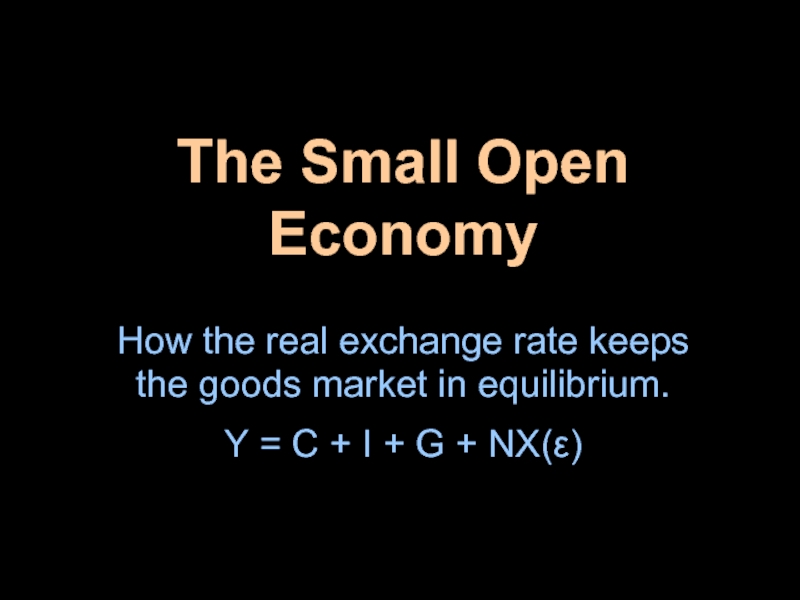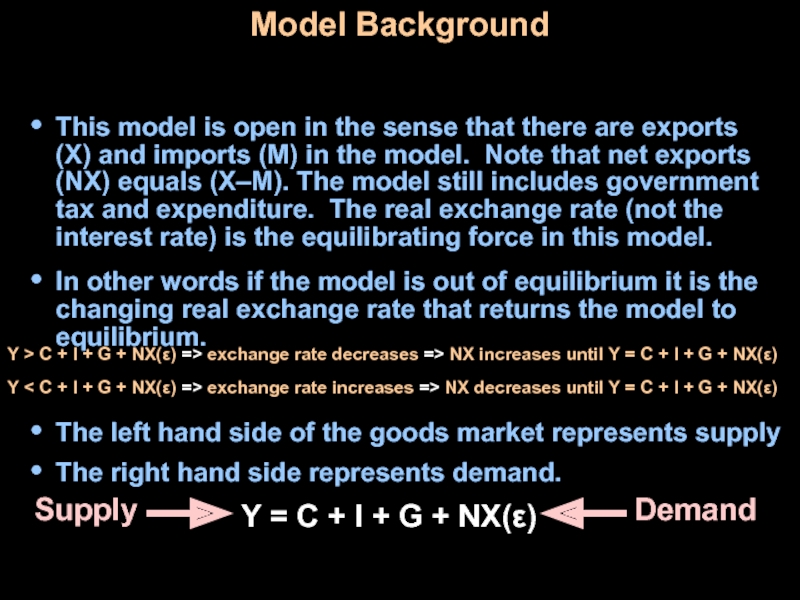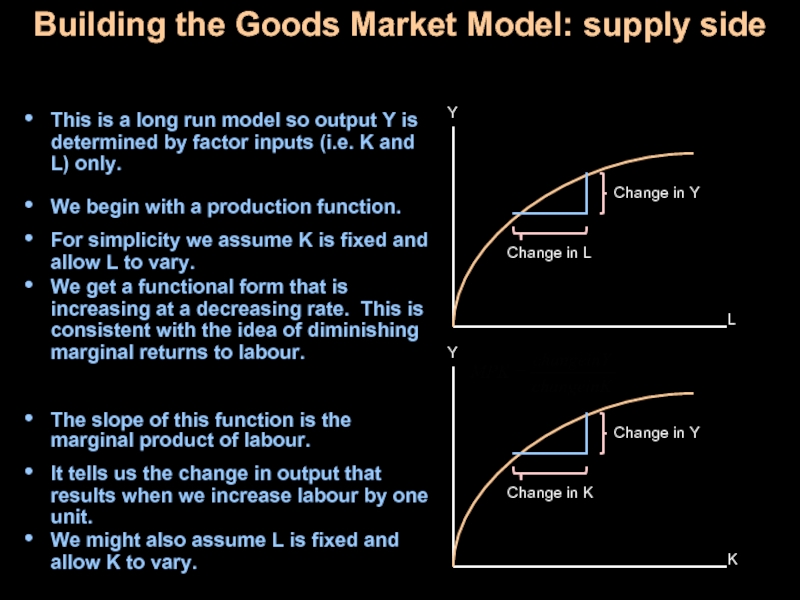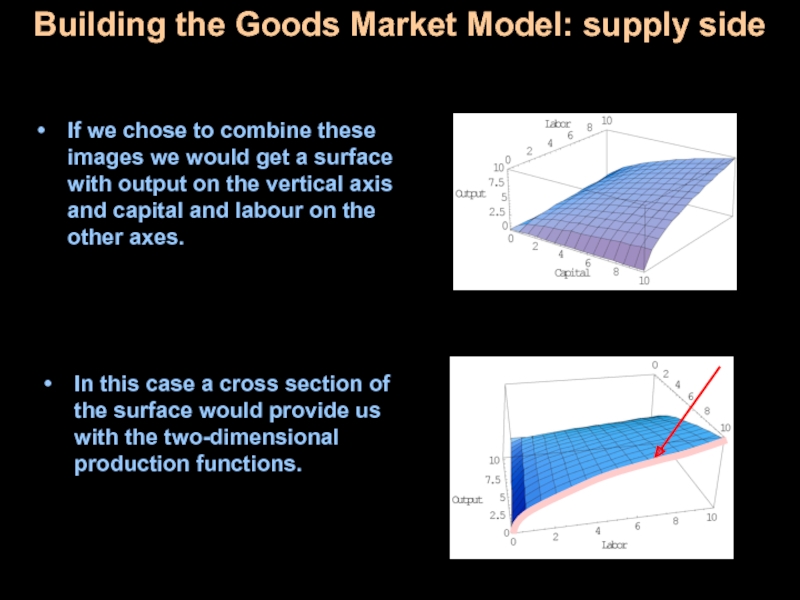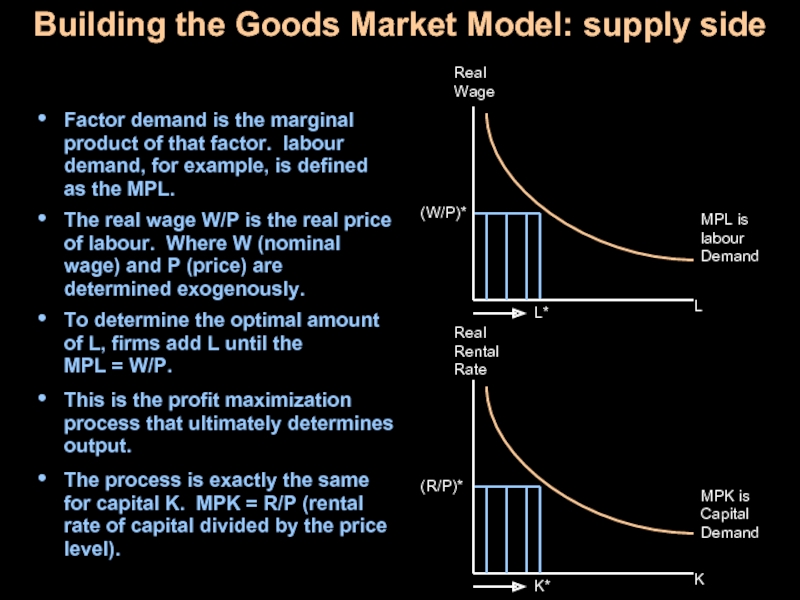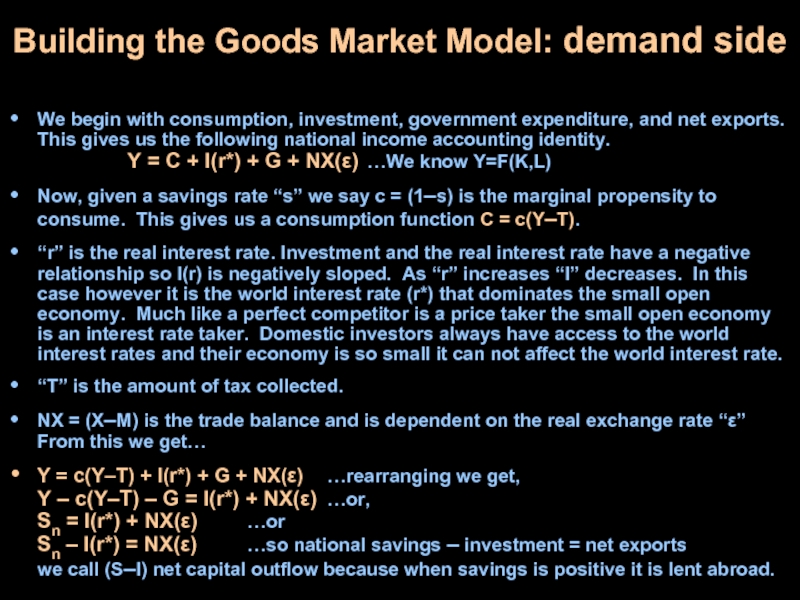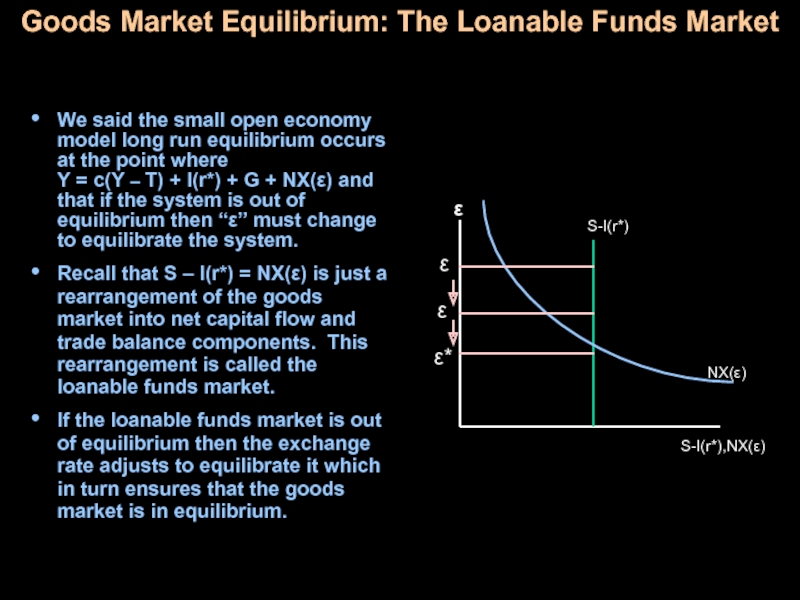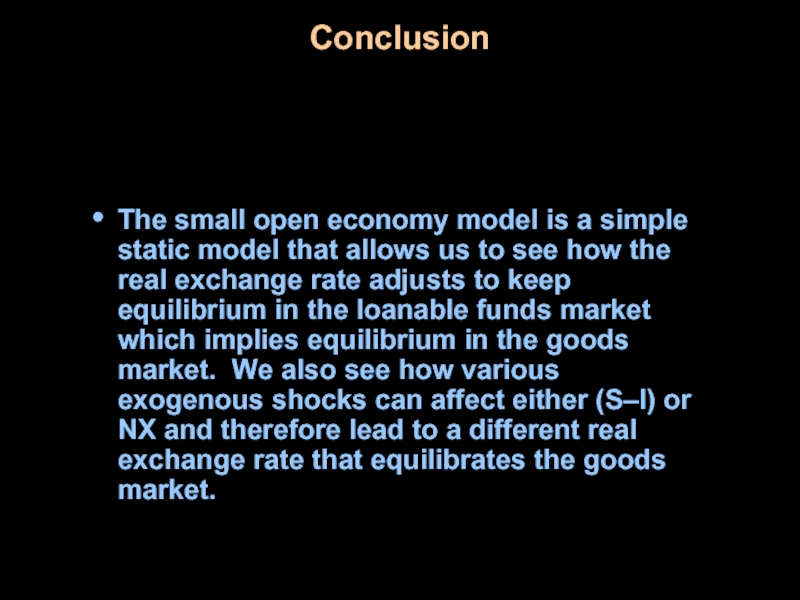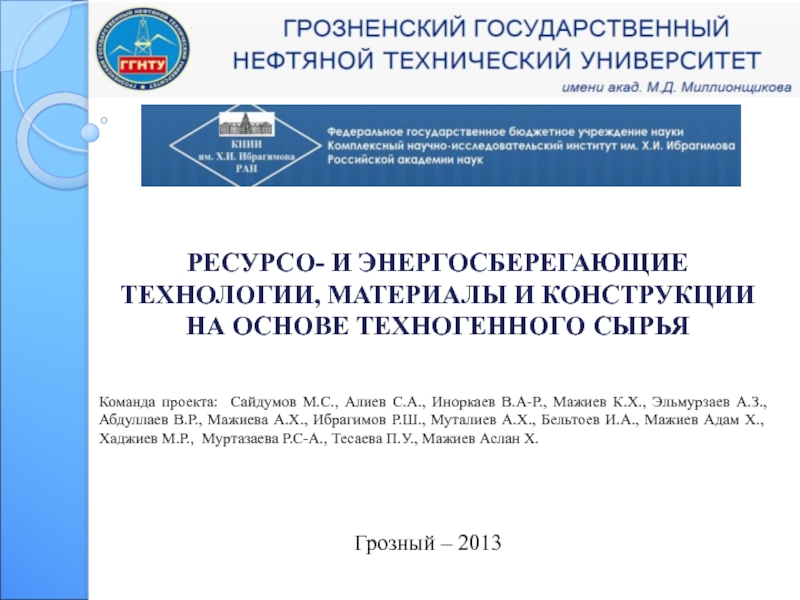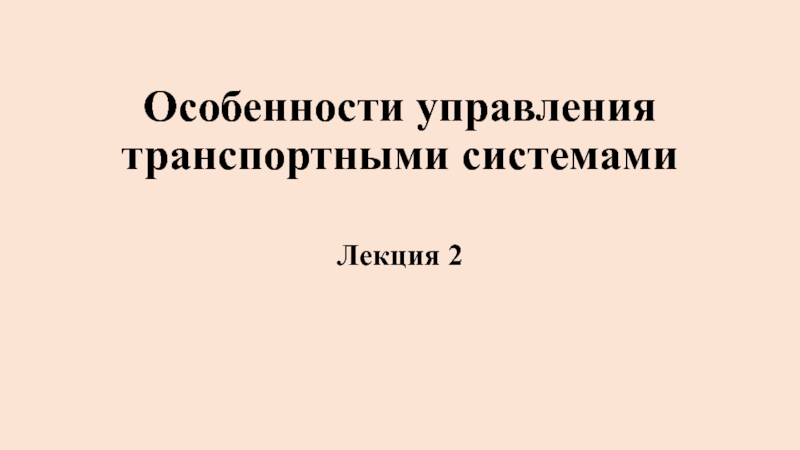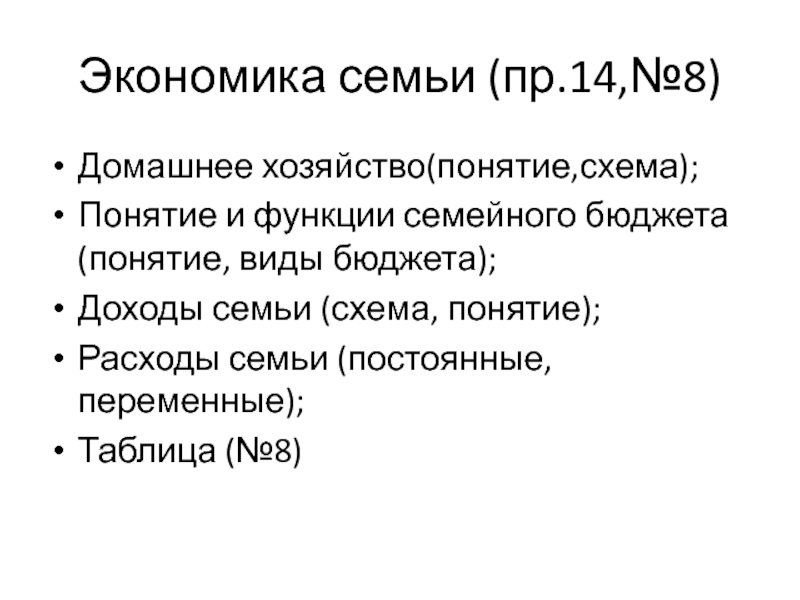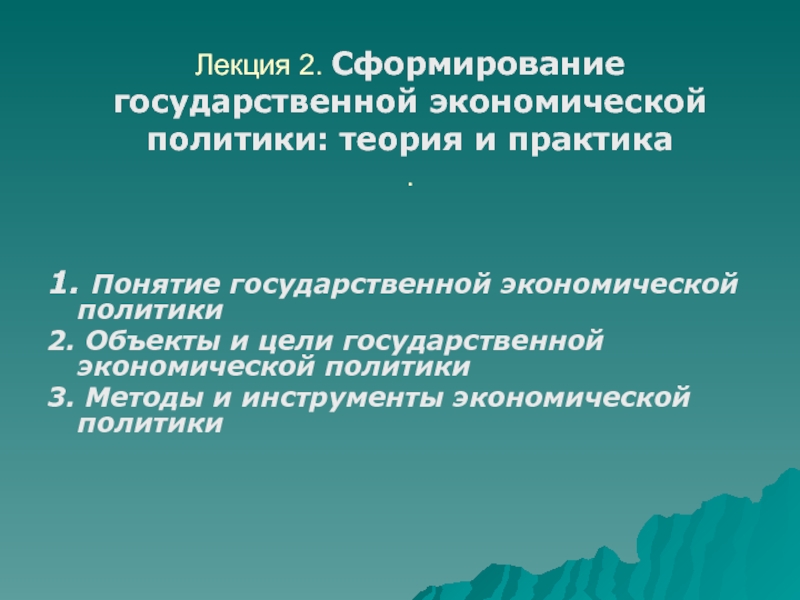- Главная
- Разное
- Дизайн
- Бизнес и предпринимательство
- Аналитика
- Образование
- Развлечения
- Красота и здоровье
- Финансы
- Государство
- Путешествия
- Спорт
- Недвижимость
- Армия
- Графика
- Культурология
- Еда и кулинария
- Лингвистика
- Английский язык
- Астрономия
- Алгебра
- Биология
- География
- Детские презентации
- Информатика
- История
- Литература
- Маркетинг
- Математика
- Медицина
- Менеджмент
- Музыка
- МХК
- Немецкий язык
- ОБЖ
- Обществознание
- Окружающий мир
- Педагогика
- Русский язык
- Технология
- Физика
- Философия
- Химия
- Шаблоны, картинки для презентаций
- Экология
- Экономика
- Юриспруденция
The Small Open Economy презентация
Содержание
- 1. The Small Open Economy
- 2. Model Background This model is open in
- 3. Building the Goods Market Model: supply side
- 4. If we chose to combine these images
- 5. Building the Goods Market Model: supply side
- 6. Building the Goods Market Model: demand side
- 7. Goods Market Equilibrium: The Loanable Funds Market
- 8. The Markets in Transition There are
- 9. Conclusion The small open economy model is
Слайд 1The Small Open Economy
How the real exchange rate keeps the
Y = C + I + G + NX(ε)
Слайд 2Model Background
This model is open in the sense that there are
In other words if the model is out of equilibrium it is the changing real exchange rate that returns the model to equilibrium.
Y > C + I + G + NX(ε) => exchange rate decreases => NX increases until Y = C + I + G + NX(ε)
Y = C + I + G + NX(ε)
The left hand side of the goods market represents supply
The right hand side represents demand.
Y < C + I + G + NX(ε) => exchange rate increases => NX decreases until Y = C + I + G + NX(ε)
Слайд 3Building the Goods Market Model: supply side
This is a long run
Change in Y
Change in L
Change in Y
Change in K
We begin with a production function.
For simplicity we assume K is fixed and allow L to vary.
The slope of this function is the marginal product of labour.
It tells us the change in output that results when we increase labour by one unit.
We might also assume L is fixed and allow K to vary.
We get a functional form that is increasing at a decreasing rate. This is consistent with the idea of diminishing marginal returns to labour.
Слайд 4If we chose to combine these images we would get a
Building the Goods Market Model: supply side
In this case a cross section of the surface would provide us with the two-dimensional production functions.
Слайд 5Building the Goods Market Model: supply side
Factor demand is the marginal
MPL is
labour
Demand
(W/P)*
L*
(R/P)*
K*
MPK is
Capital
Demand
The real wage W/P is the real price of labour. Where W (nominal wage) and P (price) are determined exogenously.
To determine the optimal amount of L, firms add L until the
MPL = W/P.
This is the profit maximization process that ultimately determines output.
The process is exactly the same for capital K. MPK = R/P (rental rate of capital divided by the price level).
Слайд 6Building the Goods Market Model: demand side
We begin with consumption, investment,
Now, given a savings rate “s” we say c = (1–s) is the marginal propensity to consume. This gives us a consumption function C = c(Y–T).
“r” is the real interest rate. Investment and the real interest rate have a negative relationship so I(r) is negatively sloped. As “r” increases “I” decreases. In this case however it is the world interest rate (r*) that dominates the small open economy. Much like a perfect competitor is a price taker the small open economy is an interest rate taker. Domestic investors always have access to the world interest rates and their economy is so small it can not affect the world interest rate.
“T” is the amount of tax collected.
NX = (X–M) is the trade balance and is dependent on the real exchange rate “ε” From this we get…
Y = c(Y–T) + I(r*) + G + NX(ε) …rearranging we get, Y – c(Y–T) – G = I(r*) + NX(ε) …or, Sn = I(r*) + NX(ε) …or Sn – I(r*) = NX(ε) …so national savings – investment = net exports we call (S–I) net capital outflow because when savings is positive it is lent abroad.
Слайд 7Goods Market Equilibrium: The Loanable Funds Market
We said the small
S-I(r*),NX(ε)
ε
ε*
S-I(r*)
NX(ε)
ε
ε
Recall that S – I(r*) = NX(ε) is just a rearrangement of the goods market into net capital flow and trade balance components. This rearrangement is called the loanable funds market.
If the loanable funds market is out of equilibrium then the exchange rate adjusts to equilibrate it which in turn ensures that the goods market is in equilibrium.
Слайд 8The Markets in Transition
There are various effects which can enter
Things that might shift S – I include changes in Y, T, G, or the mpc.
Things that might shift NX include changes in domestic and foreign trade policy policies such as tariffs or quotas.
S-I(r*),NX(ε)
ε
ε*
S-I(r*)
NX(ε)
ε*
ε*
NX(ε)
S-I(r*)
All these changes require a different real exchange rate to equilibrate the market.
